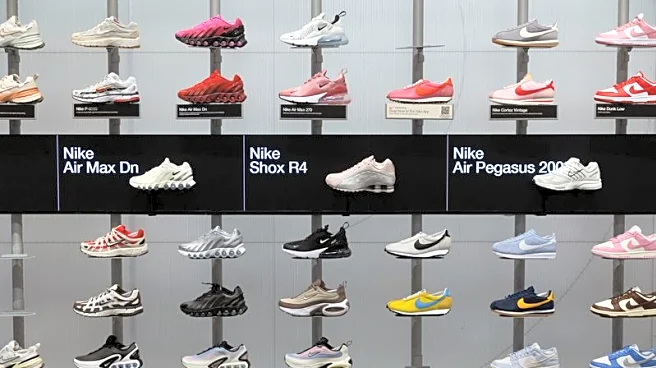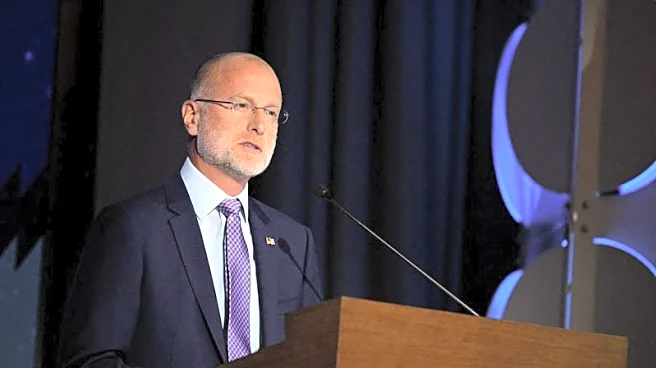What's Happening?
The Trump Administration has reaffirmed its commitment to maintaining the full 1,200 megahertz of the 6 GHz band for Wi-Fi use, as initially designated in 2020. Robin Colwell, Deputy Assistant to President Trump, confirmed that the administration is not reversing its stance on this allocation. The Federal Communications Commission (FCC) has regained auction authority and is directed to identify 800 megahertz of spectrum for licensed use. Discussions at the Spectrum Policy Symposium, hosted by the National Telecommunications and Information Administration (NTIA), highlighted the importance of spectrum allocation in meeting national connectivity goals. Broadcom's Chris Szymanski emphasized the need for more uplink capacity to support AI-enabled devices, suggesting additional licensed high-power mobile communications in sub-5 GHz frequencies.
Why It's Important?
The decision to maintain the 6 GHz band for unlicensed Wi-Fi use is crucial for the continued development of wireless connectivity in the U.S. This spectrum allocation supports the proliferation of AI-enabled devices and streaming services, which require significant uplink capacity. The policy ensures that the U.S. remains competitive in global technology markets, particularly against countries like China and France, which are pushing for different spectrum allocations. Maintaining this spectrum for Wi-Fi use supports the growth of industries reliant on high-capacity fiber links and data center interconnects, such as cloud providers and financial institutions.
What's Next?
Future discussions will likely focus on expanding spectrum availability to meet the growing demands of AI and other advanced technologies. The NTIA and FCC are expected to continue exploring options for additional spectrum allocations that support both licensed and unlicensed use. Stakeholders, including technology companies and industry experts, will play a significant role in shaping these policies to ensure they align with technical capabilities and market realities.
Beyond the Headlines
The decision to keep the 6 GHz band for unlicensed use reflects broader strategic considerations about U.S. technological leadership. It highlights the importance of aligning policy with technical capabilities to maintain competitive advantages in global markets. The focus on fiber investment underscores the need for robust infrastructure to support future wireless networks, ensuring that the U.S. can meet the demands of emerging technologies.












